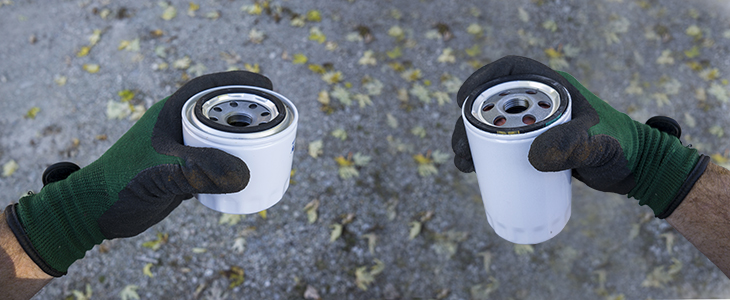
Explaining the Concept of Oil Filter Consolidation to your Customers
If you’re like most professional installers, space around your shop is scarce. And, if given the opportunity to stock fewer parts while retaining the ability to serve the entire market, you’d probably do it. This is exactly what a consolidated line of spin-on oil filters can help you achieve.
If you carry a consolidated line, you’ve undoubtedly had a customer or two ask why their new oil filter isn’t the same size as the one you took off. Understandably, most people expect that when they get a replacement oil filter – it has to be the exact same size in order to offer enough capacity and efficiency to protect their engine. After all, the manufacturer installed the OEM filter of a certain size for a reason, right? That’s not entirely accurate. While an engine may need a filter of a certain capacity for optimal protection, it doesn’t necessarily require the exact same size as what came with the car off the assembly line. Most engines today can use a filter that’s smaller; as long as it offers adequate capacity and efficiency. The modern engine has benefited from technological advancements and so have the filters designed to keep them running strong.
Not your Father’s Engines, or Oil Filters
Consumer Education is Key
When it comes to oil filter consolidation, it’s important to educate your customers to ensure the highest level of satisfaction. We can help you ease their fears with the right approach to the conversation. Here are a few points you can share to help your customers understand why their new filter is a different size than their old filter – without overwhelming them with automotive technical jargon.
- Today’s engines run much cleaner
- Today’s oils are engineered with high tech detergents that reduce engine wear and prevent debris from entering the oil system
- The paper media in today’s filter elements are more advanced, with the ability to capture more dirt than they used to. This translates to less paper in the finished filter and ultimately allows aftermarket manufacturers to reduce the size of the canisters.
In-depth industry studies have confirmed that these more advanced filtration media developed in the 21st century in conjunction with the high-tech lubricants of today enable new flexibility in the sizing of oil filters. In 2018, a smaller spin-on oil filter is indeed capable of effectively filtering in place of the larger traditional version. You should feel confident installing these filters on your customer’s cars and they should have peace of mind in knowing that their engines are sufficiently protected.
Share this entry